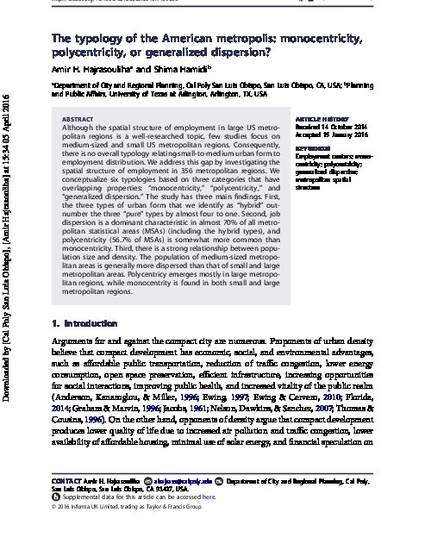
Article
The typology of the American metropolis: monocentricity, polycentricity, or generalized dispersion?
Urban Geography
(2016)
Abstract
Although the spatial structure of employment in large US metropolitan regions is a well-researched topic, few studies focus on medium-sized and small US metropolitan regions. Consequently, there is no overall typology relating small-to-medium urban form to employment distribution. We address this gap by investigating the spatial structure of employment in 356 metropolitan regions. We conceptualize six typologies based on three categories that have overlapping properties: “monocentricity,” “polycentricity,” and “generalized dispersion.” The study has three main findings. First, the three types of urban form that we identify as “hybrid” outnumber the three “pure” types by almost four to one. Second, job dispersion is a dominant characteristic in almost 70% of all metropolitan statistical areas (MSAs) (including the hybrid types), and polycentricity (56.7% of MSAs) is somewhat more common than monocentricity. Third, there is a strong relationship between population
size and density. The population of medium-sized metropolitan areas is generally more dispersed than that of small and large metropolitan areas. Polycentricy emerges mostly in large metropolitan regions, while monocentrity is found in both small and large metropolitan regions.
Keywords
- Employment centers; monocentricity; polycentricity; generalized dispersion; metropolitan spatial structure
Disciplines
Publication Date
2016
Citation Information
Amir Hajrasouliha and Shima Hamidi. "The typology of the American metropolis: monocentricity, polycentricity, or generalized dispersion?" Urban Geography (2016) Available at: http://works.bepress.com/hajrasouliha/3/
